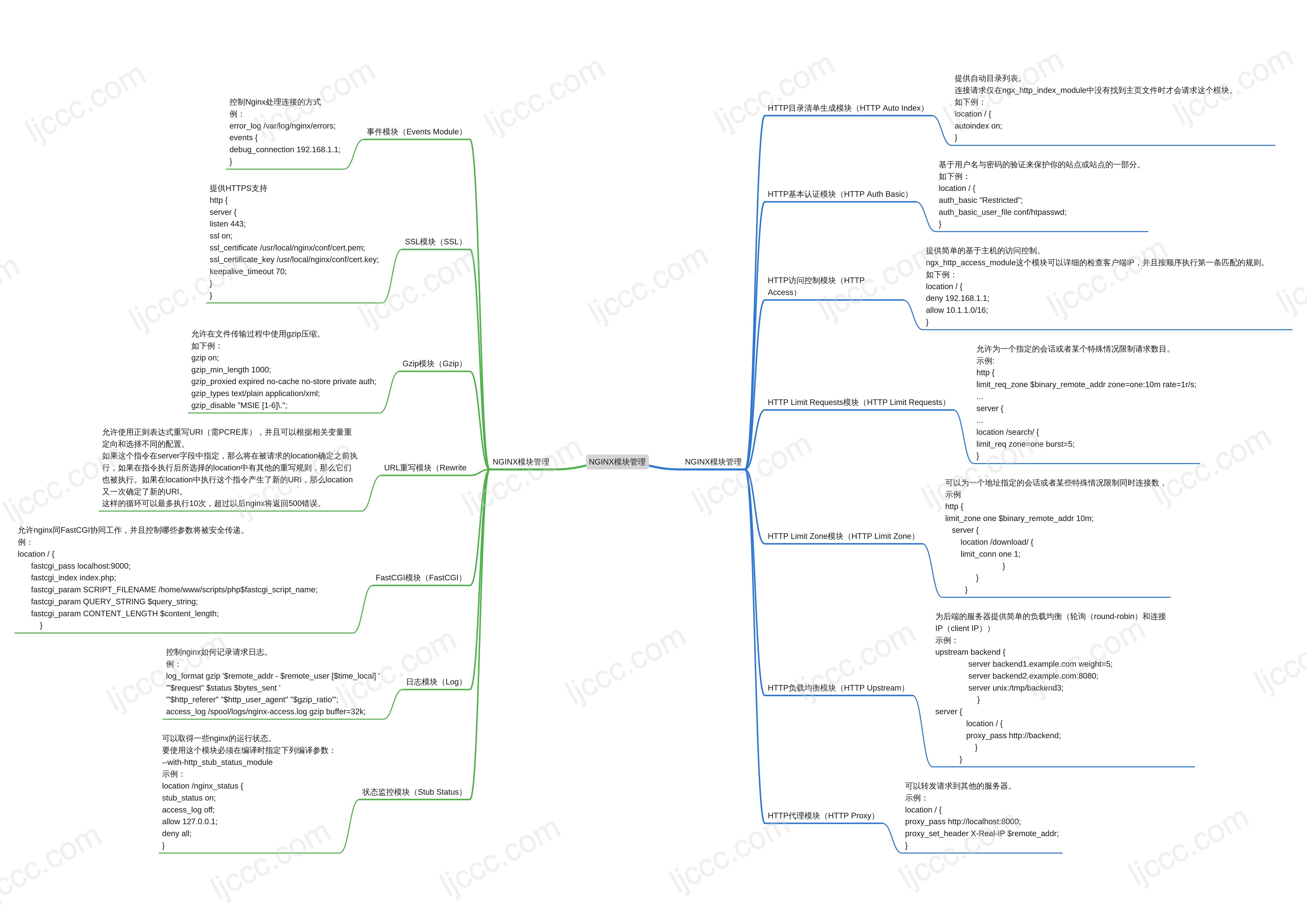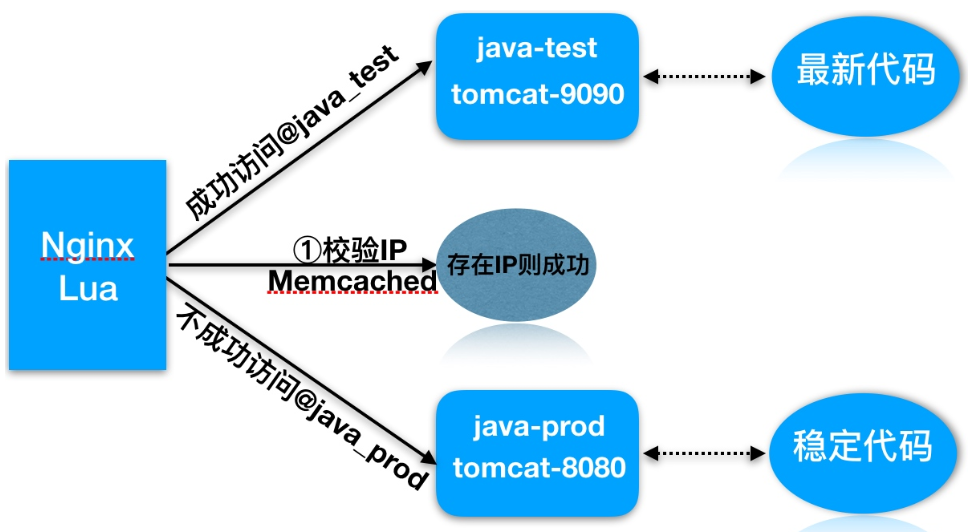Nginx匹配规则和优先级
1.Server优先级
Nginx多个相同Server_name优先级
1.1、环境准备
[root@nginx ~]# mkdir /soft/code{1..3} -p
[root@nginx ~]# for i in {1..3};do echo "<h1>Code $i</h1>" > /soft/code"$i"/index.html;done1.2、准备多份相同Nginx配置文件
[root@Nginx conf.d]# ll
总用量 12
-rw-r--r-- 1 root root 123 4月 19 19:08 testserver1.conf
-rw-r--r-- 1 root root 123 4月 19 19:09 testserver2.conf
-rw-r--r-- 1 root root 123 4月 19 19:09 testserver3.conf
#内容如下
[root@Nginx conf.d]# cat testserver{1..3}.conf
server {
listen 80;
server_name testserver1 192.168.69.113;
location / {
root /soft/code1;
index index.html;
}
}
server {
listen 80;
server_name testserver2 192.168.69.113;
location / {
root /soft/code2;
index index.html;
}
}
server {
listen 80;
server_name testserver3 192.168.69.113;
location / {
root /soft/code3;
index index.html;
}
}
#检测语法
[root@Nginx conf.d]# nginx -t
nginx: [warn] conflicting server name "192.168.69.113" on 0.0.0.0:80, ignored
nginx: [warn] conflicting server name "192.168.69.113" on 0.0.0.0:80, ignored
nginx: the configuration file /etc/nginx/nginx.conf syntax is ok
nginx: configuration file /etc/nginx/nginx.conf test is successful
#重启Nginx
[root@Nginx conf.d]# nginx -t1.3、测试访问效果
[root@Nginx conf.d]# curl 192.168.69.113 <h1>Code 1</h1> [root@Nginx conf.d]# mv testserver1.conf testserver5.conf [root@Nginx conf.d]# nginx -s reload [root@Nginx conf.d]# curl 192.168.69.113 <h1>Code 2</h1>
2.location优先级
一个server出现多个location
| 完整匹配 | 优先级高 |
|---|---|
| = | 进行普通字符精确匹配, 完全匹配 |
| ^~ | 表示普通字符匹配, 使用前缀匹配 |
| 正则匹配 | 匹配后会继续查找更精确匹配的location |
| ~ | 区分大小写匹配 |
| ~* | 不区分大小写 |
2.1、实例准备
[root@Nginx conf.d]# cat testserver.conf
server {
listen 80;
server_name 192.168.69.113;
root /soft;
index index.html;
location = /code1/ {
rewrite ^(.*)$ /code1/index.html break;
}
location ~ /code* {
rewrite ^(.*)$ /code3/index.html break;
}
location ^~ /code {
rewrite ^(.*)$ /code2/index.html break;
}
}2.2、测试效果
[root@Nginx conf.d]# curl http:#192.168.69.113/code1/ <h1>Code 1</h1> #注释掉精确匹配=, 重启Nginx [root@Nginx ~]# curl http:#192.168.69.113/code1/ <h1>Code 2</h1> #注释掉^~, 重启Nginx [root@Nginx ~]# curl http:#192.168.69.113/code1/ <h1>Code 3</h1>
3.try_files的使用
nginx的try_files按顺序检查文件是否存在
location /{
try_files $uri $uri/ /index.php;
}#1.检查用户请求的uri内容是否存在本地,存在则解析
#2.将请求加/, 类似于重定向处理
#3.最后交给index.php处理
3.1、演示环境准备
[root@Nginx ~]# echo "Try-Page" > /soft/code/index.html [root@Nginx ~]# echo "Tomcat-Page" > /soft/app/apache-tomcat-9.0.7/webapps/ROOT/index.html
#启动tomcat [root@Nginx ~]# sh /soft/app/apache-tomcat-9.0.7/bin/startup.sh #检查tomcat端口 [root@Nginx ~]# netstat -lntp|grep 8080 tcp6 0 0 :::8080 :::* LISTEN 104952/java
3.2、配置Nginx的tryfiles
[root@Nginx ~]# cat /etc/nginx/conf.d/try.conf
server {
listen 80;
server_name 192.168.69.113;
root /soft/code;
index index.html;
location / {
try_files $uri @java_page;
}
location @java_page {
proxy_pass http:#127.0.0.1:8080;
}
}
#重启Nginx
[root@Nginx ~]# nginx -s reload3.3、测试tryfiles
[root@Nginx ~]# curl http:#192.168.69.113/index.html
Try-Page
#将/soft/code/index.html文件移走
[root@Nginx ~]# mv /soft/code/{index.html,index.html_bak}
#发现由Tomcat吐回了请求
[root@Nginx ~]# curl http:#192.168.69.113/index.html
Tomcat-Page3.4、alias与root区别
root路径配置
[root@Nginx ~]# mkdir /local_path/code/request_path/code/ -p [root@Nginx ~]# echo "Root" > /local_path/code/request_path/code/index.html
#Nginx的root配置
[root@Nginx ~]# cat /etc/nginx/conf.d/root.conf
server {
listen 80;
index index.html;
location /request_path/code/ {
root /local_path/code/;
}
}
#请求测试
[root@Nginx conf.d]# curl http:#192.168.69.113/request_path/code/index.html
Root
#实际请求本地文件路径为
/local_path/code/'request_path/code'/index.htmlalias路径配置
[root@Nginx ~]# mkdir /local_path/code/request_path/code/ -p [root@Nginx ~]# echo "Alias" > /local_path/code/index.html
#配置文件
[root@Nginx ~]# cat /etc/nginx/conf.d/alias.conf
server {
listen 80;
index index.html;
location /request_path/code/ {
alias /local_path/code/;
}
}
#测试访问
[root@Nginx ~]# curl http://192.168.69.113/request_path/code/index.html
Alias
#实际访问本地路径
/local_path/code/'index.html'Nginx传递用户的真实IP地址
$remote_addr 只能获取到最近一台服务器访问IP
x_forwarded_for 头部信息容易被篡改
常见HTTP状态码
200 正常请求
301 永久跳转
302 临时跳转
400 请求参数错误
401 账户密码错误(authorization required)
403 权限被拒绝(forbidden)
404 文件没找到(Not Found)
413 用户上传文件大小限制(Request Entity Too Large)
502 后端服务无响应(boy gateway)
504 后端服务执行超时(Gateway Time-out)
网站访问原理
uv:唯一设备100
ip:唯一出口 1
1.DNS流程
1.查询本地Hosts
2.请求本地localDNS
3.返回对应的IP
2.HTTP连接
1.建立TCP三次握手,发送请求内容, 请求头、请求的行、请求的主体
2.将请求传递给负载均衡, 负载均衡做对应的调度
3.如果请求的是静态页面, 那么调度至对应的静态集群组即可
4.如果请求的是动态页面, 将请求调度至动态集群组
1.如果仅仅是请求页面, 可能会经过Opcache缓存返回
2.如果请求页面需要查询数据库, 或者是往数据库插入内容
3.检查对应的操作是查询还是写入, 如果是查询数据库
4.检查查询的内容是否有被缓存, 如有缓存则返回
5.检查查询语句, 将查询结果返回
6.内存缓存Redis缓存对应的查询结果
7.返回对应客户端请求的内容至于WEB节点
8.WEB节点收到请求后返回内容至负载均衡
9.负载均衡返回客户端内容, TCP四次断开
3.HTTP断开连接
按照分层结构
CDN层->负载层->WEB层->存储层->缓存层->数据库层
同时需要注意, 每一层都有对应的缓存机制
Nginx优化方案
1.gzip压缩
2.expires静态文件缓存
3.调整网络IO模型,调整Nginx worker进程的最大连接数
5.隐藏Nginx名称和版本号
6.配置防盗链,防止资源被盗用
7.禁止通过IP地址访问,禁止恶意域名解析,只允许域名访问
8.防DDOS、cc攻击, 限制单IP并发请求连接
9.配置错误页面,根据错误代码指定网页反馈用户
10.限制上传资源目录被程序访问,防止木马入侵系统
11.Nginx加密传输优化
Nginx架构总结
基于Nginx中间件的架构
1.了解需求(定义Nginx在服务体系中的角色)
静态资源服务的功能设计
类型分类(视频、图片、html)
浏览器缓存
防盗链
流量限制
防资源盗用
压缩(压缩模式, 压缩比例, 压缩类型)
代理服务
协议类型
正向代理
反向代理
负载均衡
代理缓存
头信息处理
Proxy_Pass
LNMP
动静分离
2.设计评估
硬件 CPU、内存、磁盘
系统(用户权限、日志目录存放)
代理服务/负载均衡 (CPU、内存)
静态资源服务(硬盘容量、硬盘转速)
动态资源服务(硬盘转速、读写效率)
缓存资源服务(SSD固态)
3.配置注意事项
合理配置
了解原理
http协议原理
http状态原理
操作系统原理
关注日志
日志是否有打开
是否有对应请求
请求状态码信息符合
错误日志信息吐出来
错误日志内容和含义





 豫公网安备41042502000209号
豫公网安备41042502000209号